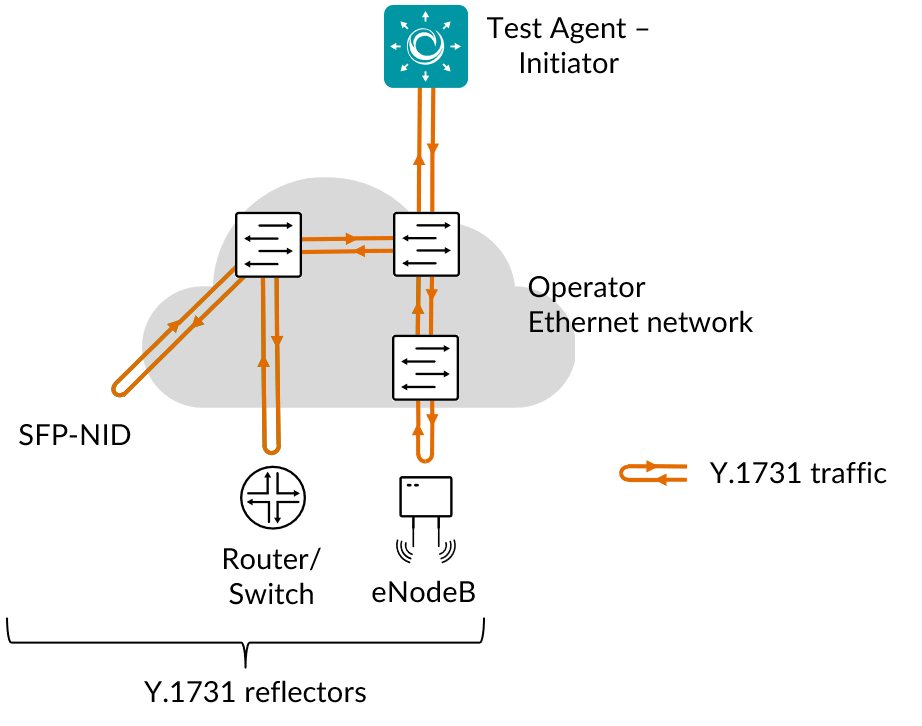Introduction to Y.1731 testing¶
Routing Active Testing supports the following parts of ► ITU-T Recommendation G.8013/Y.1731:
Fault management:
Ethernet loopback (ETH-LB)
Performance monitoring:
Frame delay measurement (ETH-DM)
Synthetic loss measurement (ETH-SLM)
These are part of the Y.1731 OAM functions for Ethernet-based networks.
The ETH-LB function is also found in the IEEE 802.1ag (CFM, Connectivity Fault Management) standard.

Y.1731 defines a Layer 2 protocol, and therefore it requires Layer 2 connectivity between the Test Agent and the device you are testing towards. You can then send traffic from the Test Agent towards a Y.1731-capable device and have the traffic reflected back to the Test Agent, which measures loss, delay, and delay variation (jitter).
Terminology and definitions used on the Y.1731 pages of the documentation:
ME: Maintenance Entity
MEG: ME Group
MEL: MEG Level
MEP: MEG End Point
MIP: MEG Intermediate Point
MEG level¶
MEG levels range from 0 to 7.
In the case where MEGs are nested, the OAM flow of each MEG has to be clearly identifiable and separable from the OAM flows of the other MEGs. In cases where the OAM flows are not distinguishable by the ETH layer encapsulation itself, the MEG level in the OAM frame distinguishes between the OAM flows of nested MEGs.
Eight MEG levels are available to accommodate different network deployment scenarios.
When customer, provider, and operator data path flows are not distinguishable based on the ETH layer encapsulations, the eight MEG levels can be shared amongst them to distinguish between OAM frames belonging to nested MEGs of customers, providers, and operators. The default MEG level assignment amongst the customer, provider, and operator roles is as follows:
Operator role: 0 … 2
Provider role: 3 … 4
Customer role: 5 … 7